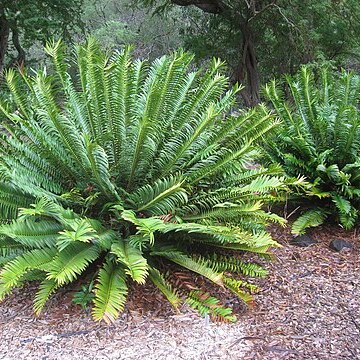Plant dioecious, palm-like. Stem aerial or decumbent, 0.5-3.5 m long, unbranched or branched from base, covered by alternating series of woody bracts and persistent, swollen, truncated leaf bases. Leaves petiolate, pinnate with rachis recurved; median leaflets dentate or entire, pungent-pointed; reduced in size towards base of rachis. Cones Mar.-Oct., appear sessile, yellowish green to brown. Male cones 1-5, oblanceoloid. Female cones up to 4, cylindric to ovoid, broader than male, facets markedly verrucose, central facet concave.


